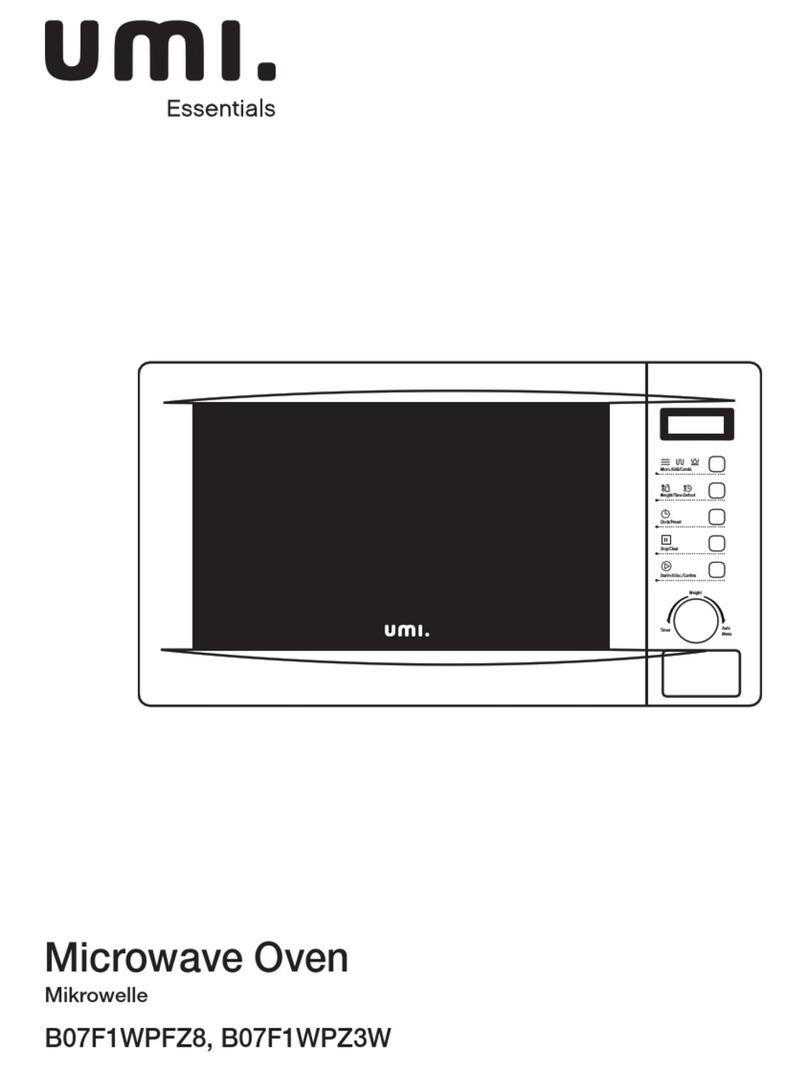
10
IMPORTANT SAFEGUARDS
Read these instructions carefully and retain them for future use. If this product is passed
to a third party, these instructions must be included.
When using electrical appliances, basic safety precautions should always be followed to reduce the
risk of fire, electric shock, and/or injury to persons including the following:
Liquids and other foods must not be heated in sealed containers since they are
liable to explode.
It is hazardous for anyone other than a competent person to carry out any
service or repair operation that involves the removal of a cover that gives
protection against exposure to microwave energy.
• This appliance can be used by children of ages 8 years and above and by people with reduced
physical, sensory or mental capabilities or lack of experience and knowledge if they have been
given supervision or instructions regarding the safe use of the appliance and understand the
hazards involved. Children may not play with the appliance. Cleaning and user maintenance
shall not be made by children unless they are older than 8 years old and are supervised.
• Keep the appliance and its cord out of reach of children younger than 8 years old.
• Only use utensils suitable for use in microwave ovens.
• The oven should be cleaned regularly and any food deposits should be removed.
• Read and follow the specific:”PRECAUTIONS TO AVOID POSSIBLE EXPOSURE TO
EXCESSIVE MICROWAVE ENERGY”.
• When heating food in plastic or paper containers, keep an eye on the oven due to the possibility
of ignition.
• If smoke is emitted, switch off or unplug the appliance and keep the door closed in order to
stifle any flames.
• Do not overcook food.
• Do not use the oven cavity for storage purposes. Do not store items, such as bread, cookies,
etc. inside the oven.
• Remove wire twist ties and metal handles from paper or plastic containers/bags before placing
them in the oven.
• Install or place this oven only in accordance with the installation instructions provided.
• Eggs in shells or whole hard-boiled eggs should not be heated in the microwave oven since
they may explode, even after microwave heating has completed.
• This appliance is intended to be used in household and similar applications such as:
–staff kitchen areas in shops, offices and other working environments;
–by clients in hotels, motels and other types of residential environments;
–farm houses;
WARNING
WARNING




























